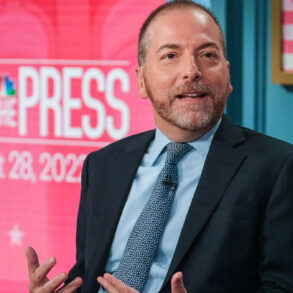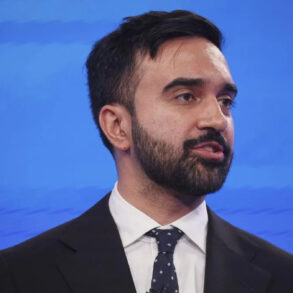President Donald Trump has reignited his battle against sanctuary cities, announcing plans to withhold all federal funding from any city or state that limits cooperation with federal immigration enforcement. The move comes as part of his broader effort to carry out what he has called the “largest-ever” mass deportation operation in American history.
What Sanctuary Cities Are and Why Trump Is Targeting Them
Sanctuary cities are jurisdictions that adopt policies limiting how much local law enforcement can cooperate with federal immigration agencies like U.S. Immigration and Customs Enforcement (ICE) or Customs and Border Protection (CBP). In these cities, local officials often do not share immigration status information or hold individuals in custody solely because they are suspected of being in the country illegally.
Supporters of sanctuary policies argue that they protect undocumented immigrants from unfair targeting and help build trust between immigrant communities and law enforcement. However, President Trump sees it differently. On April 10, 2025, he posted on Truth Social, “No more Sanctuary Cities! They protect the Criminals, not the Victims. They are disgracing our Country, and are being mocked all over the World.”
He went on to write, “Working on papers to withhold all Federal Funding for any City or State that allows these Death Traps to exist!!!”
According to Trump, these cities are obstructing ICE’s ability to safely detain and deport undocumented individuals. When local jails release immigrants without alerting federal agents, ICE is often forced to conduct arrests in public neighborhoods. Federal officials have repeatedly stated that this makes the process riskier for agents and the public alike.
Trump’s Plan and Its Timing
While Trump did not offer a specific timeline, he stated that his administration is “working on papers” to formalize the policy. White House officials have not yet provided a comment on the timeline or exact mechanism of implementation. However, the intent appears to be clear. The administration is seeking to penalize jurisdictions financially until they change their immigration enforcement policies.
Tom Homan, Trump’s border security advisor, also previously called for cutting off federal funds to sanctuary cities. In November 2024, he said these jurisdictions “should not be rewarded with taxpayer dollars while they refuse to enforce federal law.”
Trump’s announcement comes just a few months into his second term in office. His focus on immigration has intensified since taking office in January, including the reinstatement of the Victims of Immigration Crime Engagement (VOICE) office and the signing of the Laken Riley Act. That act requires the detention and deportation of undocumented immigrants accused of crimes such as theft, burglary, assault on law enforcement, and offenses causing serious bodily harm or death.
According to the Department of Homeland Security, ICE arrested 32,809 noncitizens during the first 50 days of Trump’s second term. Of those, 28,319 were deported.
Legal and Political Pushback
Trump’s plan is already drawing strong opposition from Democratic leaders and legal experts. Critics argue that cutting off federal funds to sanctuary cities may violate the Constitution. During his first term, Trump attempted a similar policy through executive orders, but those efforts were blocked by federal judges. In one case, a lower court prevented the administration from denying grant money to cities based on their immigration policies. That decision was later reversed by an appeals court in 2020, although further legal challenges remained unresolved.
Alan Berube, a nonresident senior fellow at the Brookings Institution, warned that legal challenges are certain. “There are many city attorneys and state AGs who are ready to mount legal challenges if the administration goes down this road again,” he said, noting that Trump may be betting on more favorable courts this time.
Jessica Vaughan, policy director at the Center for Immigration Studies, said the cuts would not entirely break the budgets of these cities but would cause real problems. “These prohibitions are not going to break the budgets in the sanctuary cities and states, but they will pinch them,” she said. “It will be up to the local and state leaders to determine how to do without, and which services will be affected.”
How Much Money Is at Stake?
Federal funding makes up a significant portion of budgets in sanctuary cities. New York City expects to receive $9.7 billion in federal aid this fiscal year, which accounts for more than eight percent of its $116 billion total budget. Much of that money goes to key programs like the Department of Education and the Department of Homeless Services. These funds support programs like Head Start and free school meals for low-income children.
Chicago is similarly exposed. The city is relying on $2.72 billion in federal funding in 2025, which plays a central role in its $17 billion budget. With a projected deficit of over $1 billion for the next two years, Mayor Brandon Johnson said the city cannot afford to lose federal support. A spokesperson for Johnson said he will “vigorously defend Chicagoans from any unconstitutional or unlawful attempts to strip residents of the funding and services that they are entitled to.”
Boston, which receives over $300 million in annual federal funding, is also preparing for possible financial strain. Mayor Michelle Wu, in a recent budget address, said, “We need to be preparing for the worst in every case. Should we be entering into a more serious economic crisis triggered by this federal administration, it may very well get to the point where we will need to be considering layoffs and hiring freezes.”
Seattle, which received $207 million in federal funding last year, has already joined a lawsuit challenging Trump’s efforts to use local law enforcement to assist in federal immigration enforcement. A city spokesperson said, “Strong constitutional protections exist that limit the federal government’s ability to coerce cities by conditioning funds.”
Sanctuary Cities Defend Their Policies
Democratic leaders argue that the Trump administration is unfairly blaming sanctuary cities for national immigration challenges. During a House Oversight Committee hearing in March, Chicago Mayor Brandon Johnson pushed back, saying, “Scapegoating entire communities is not only misleading, it is unjust and it is beneath us.”
Congressional Republicans have broadened their investigation into sanctuary policies and recently summoned the governors of New York, Illinois, and Minnesota to testify at a hearing scheduled for May 15. A spokesperson for Illinois Governor J.B. Pritzker confirmed that his office is reviewing the request.
Meanwhile, a spokesperson for New York City Mayor Eric Adams said the city would review any executive order “if and when” it is filed. “No resident should be afraid to utilize public resources,” the spokesperson added.
Trump’s push to cut federal funds from sanctuary cities is part of a larger strategy to enforce immigration law more aggressively and pressure local governments into cooperation. Whether he will succeed this time remains to be seen, but both legal and political battles are already forming.
NP Editor: With a bit of luck, this will purge the woke rebellion and bring these cities back to normal. Thus far there have been no consequences for defying the federal government, but it is time they did what is best for America.







